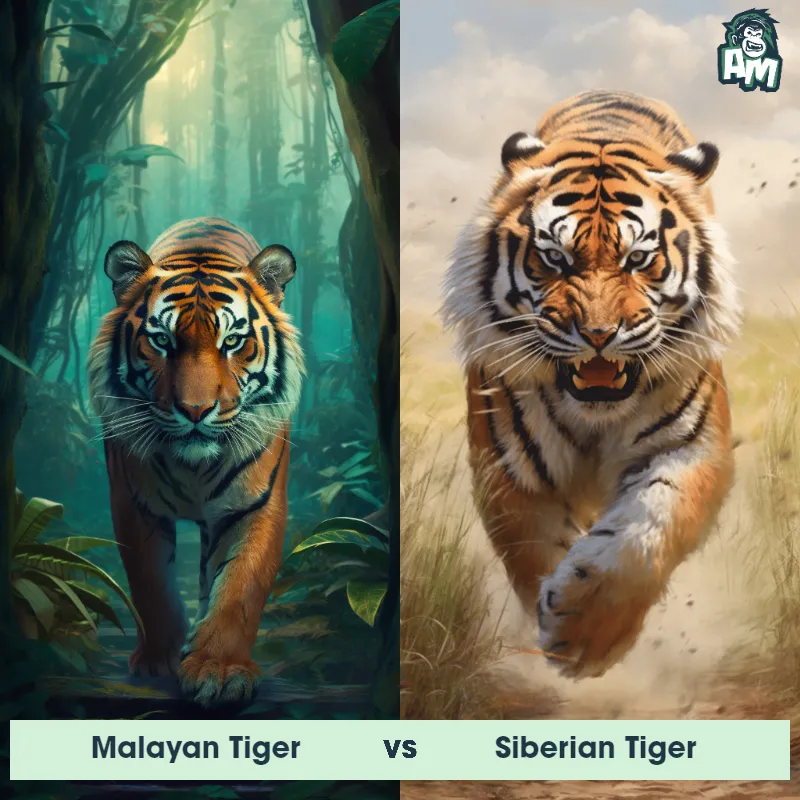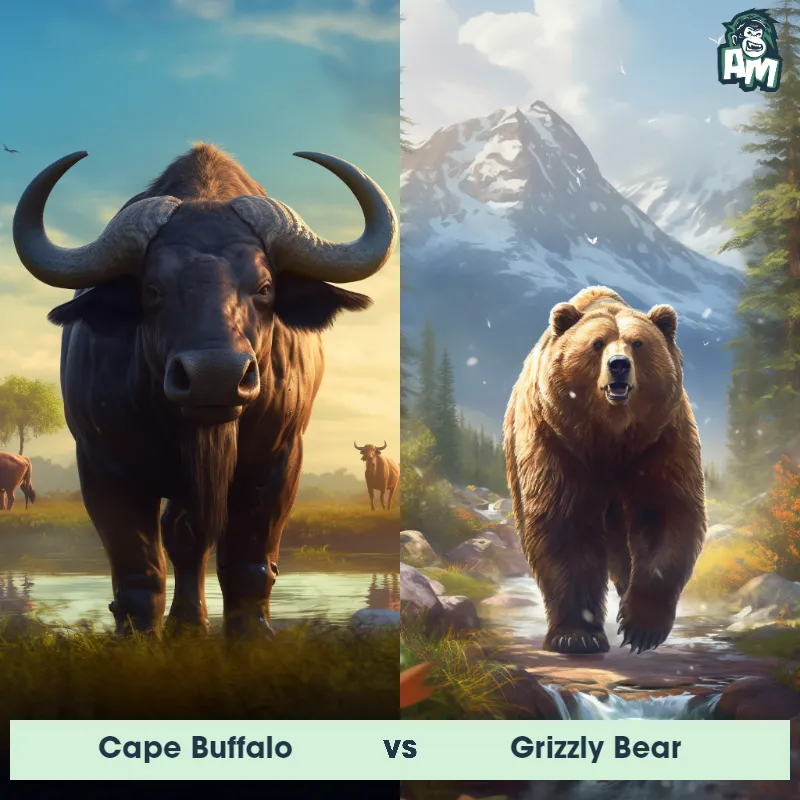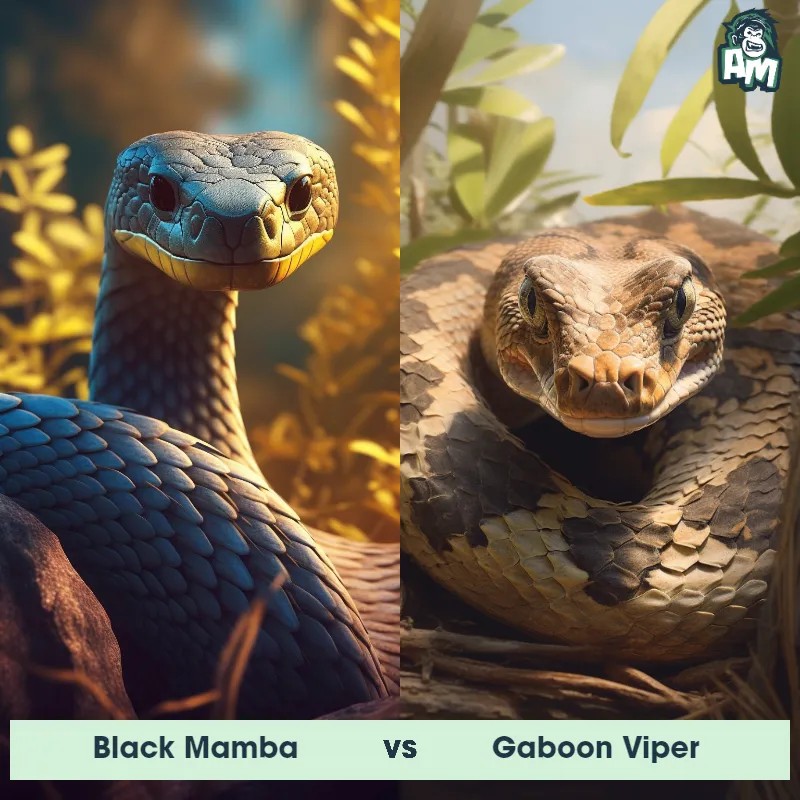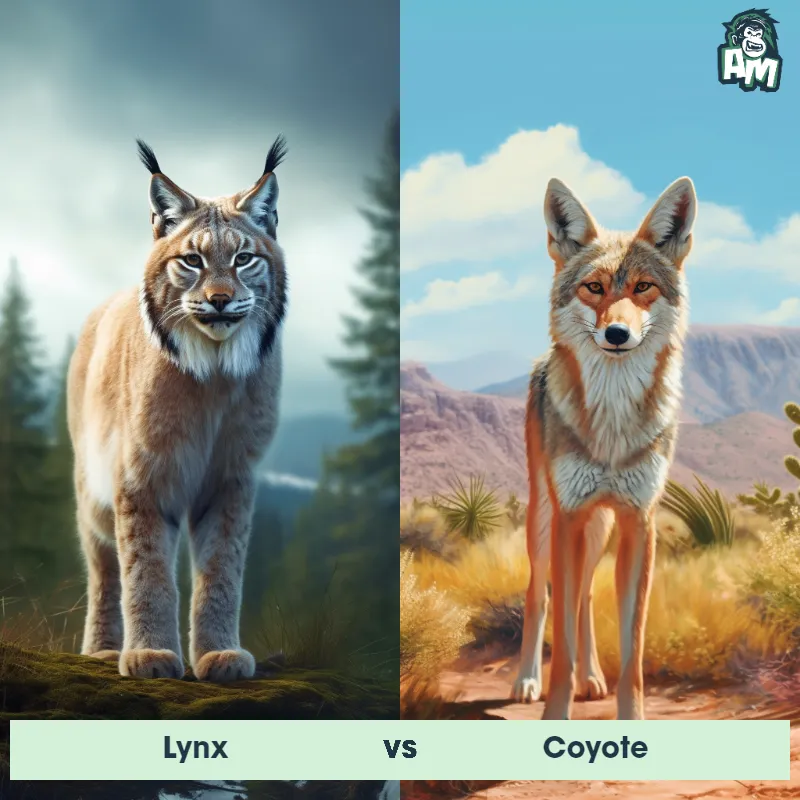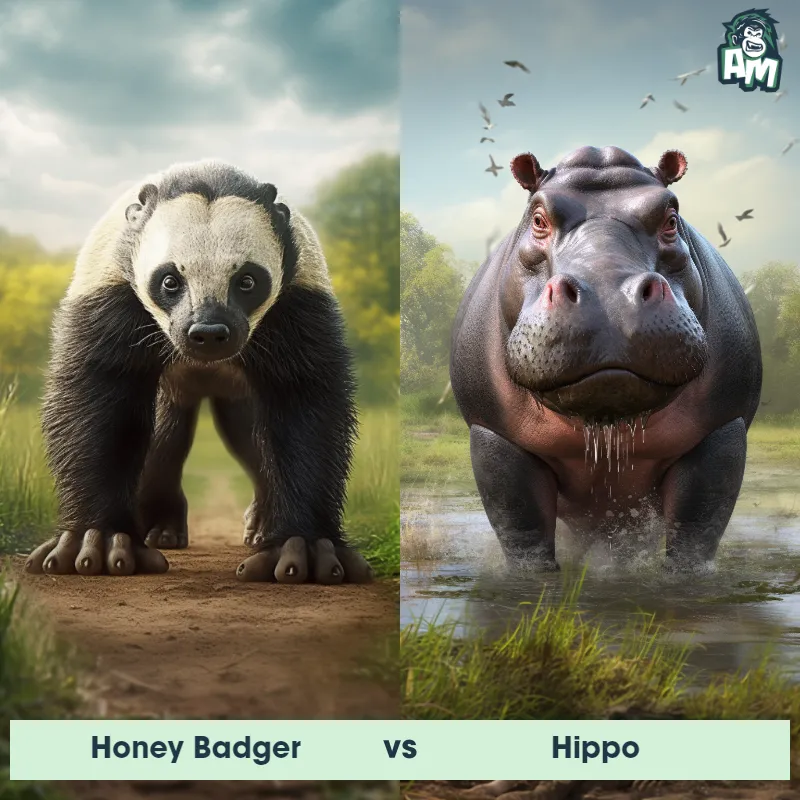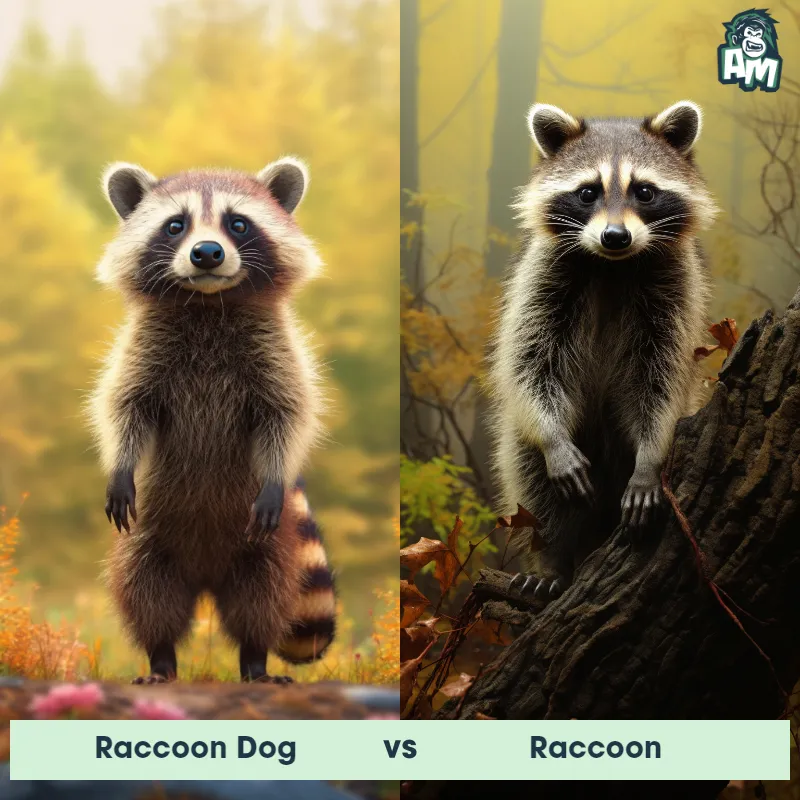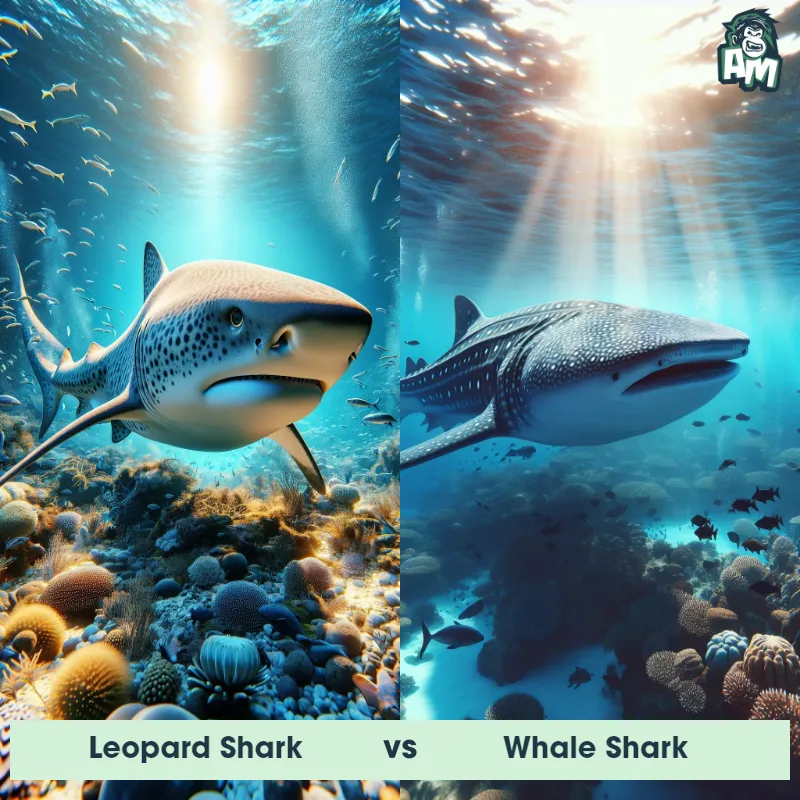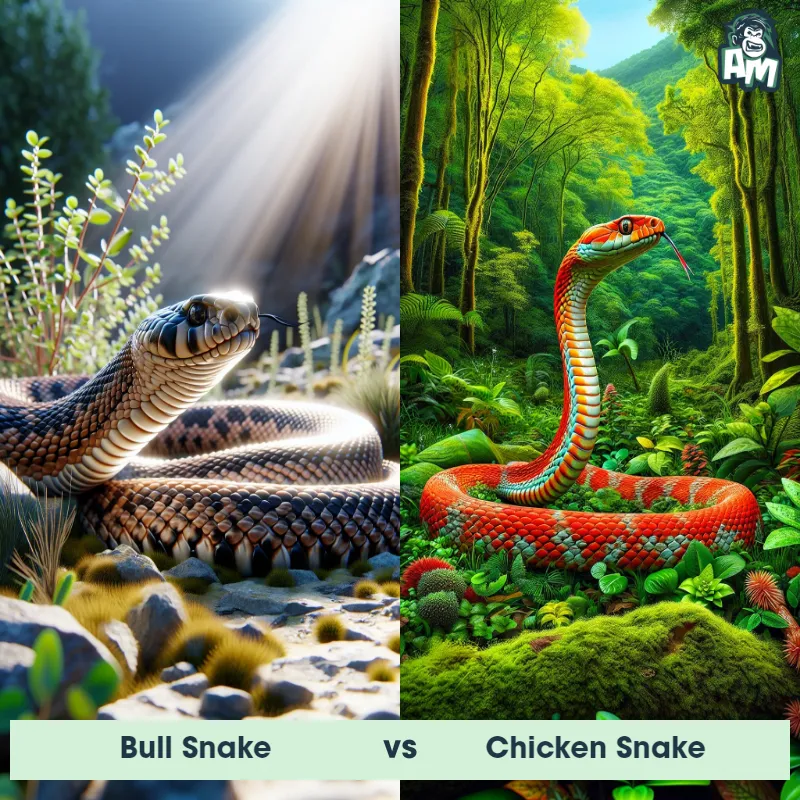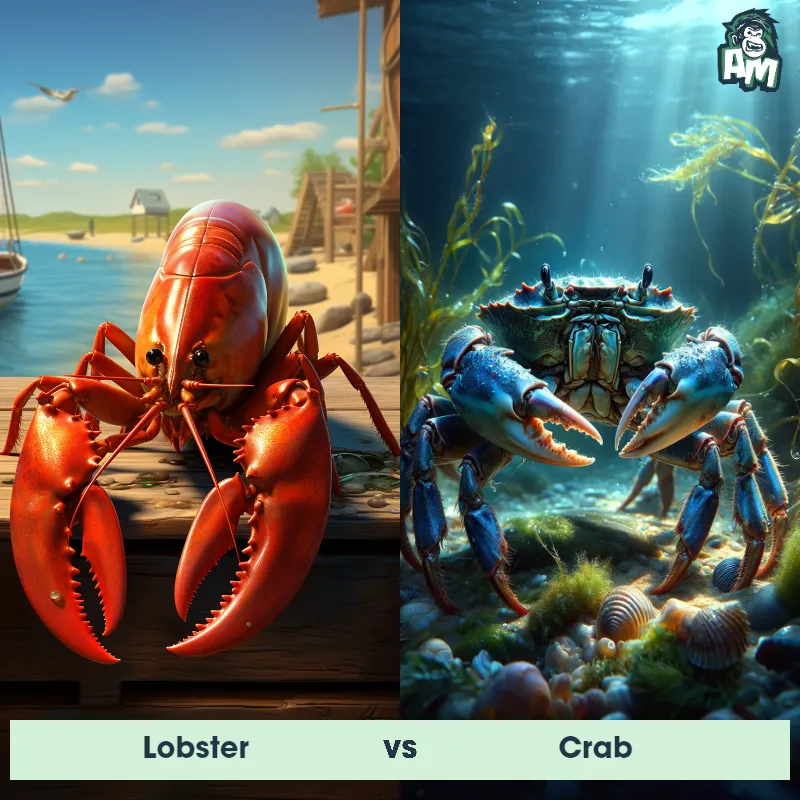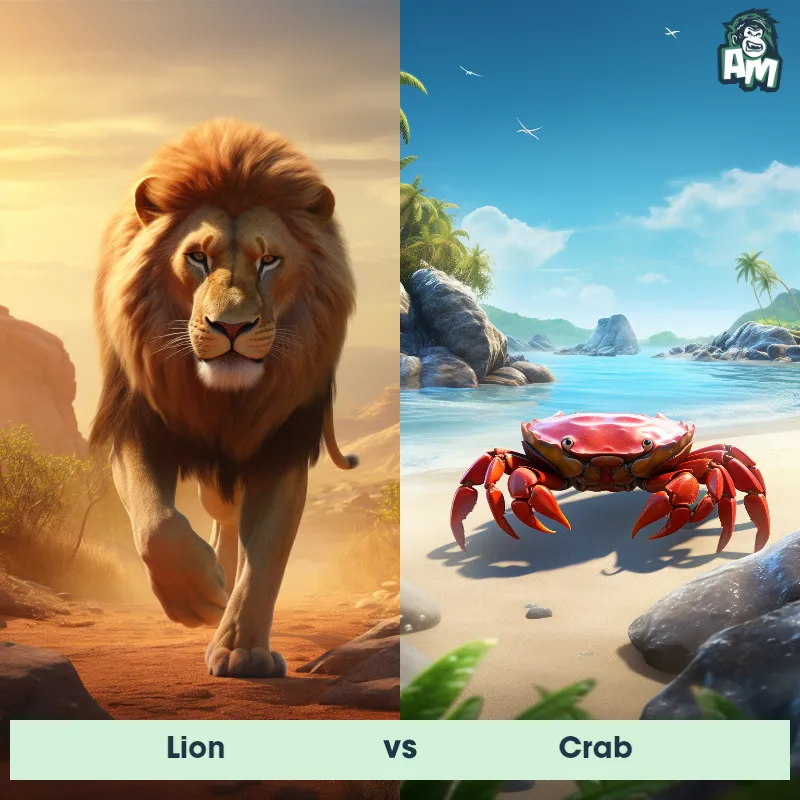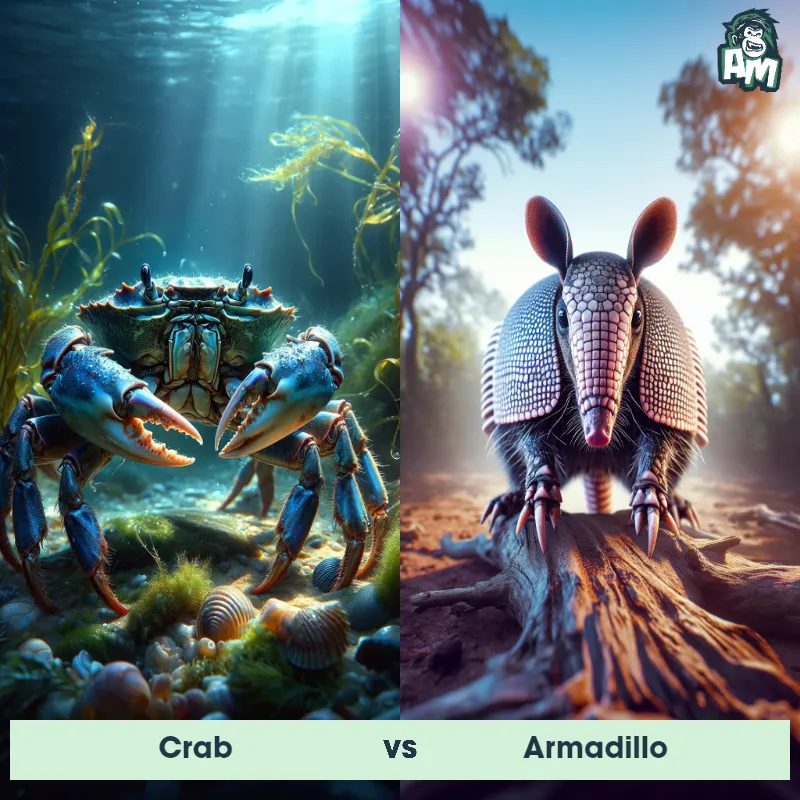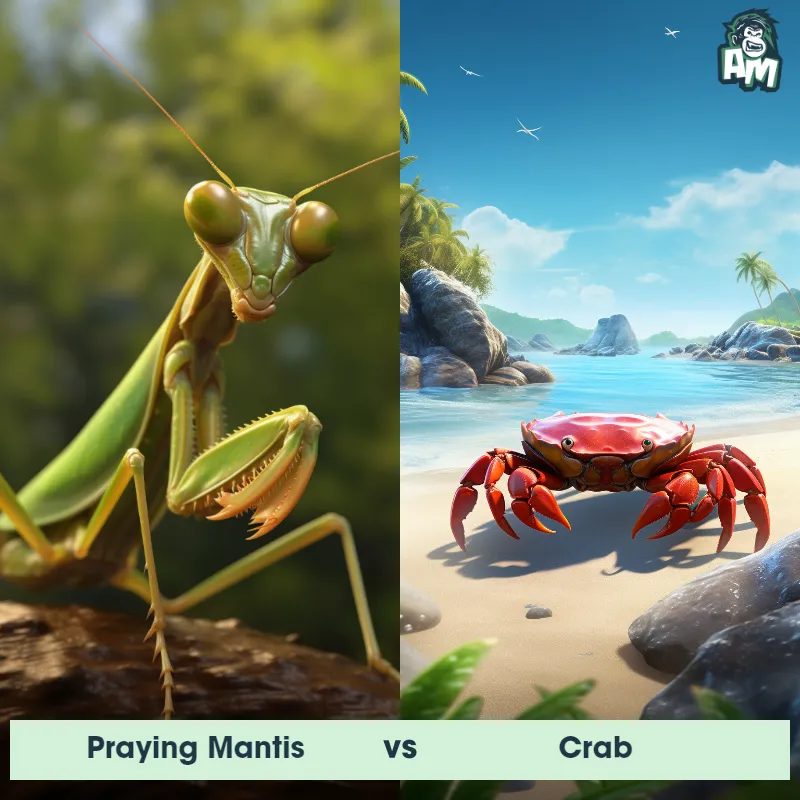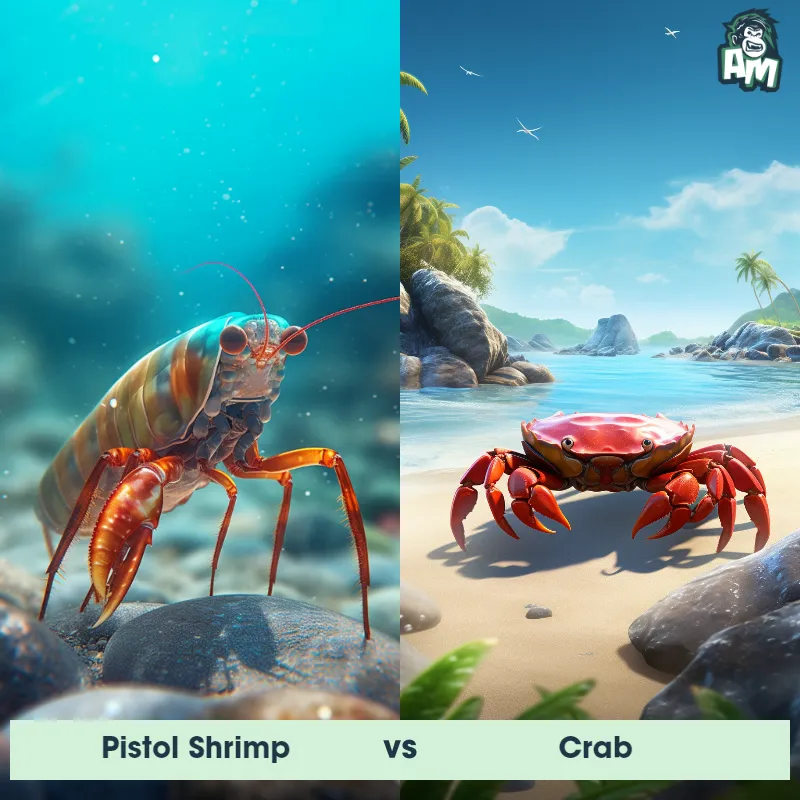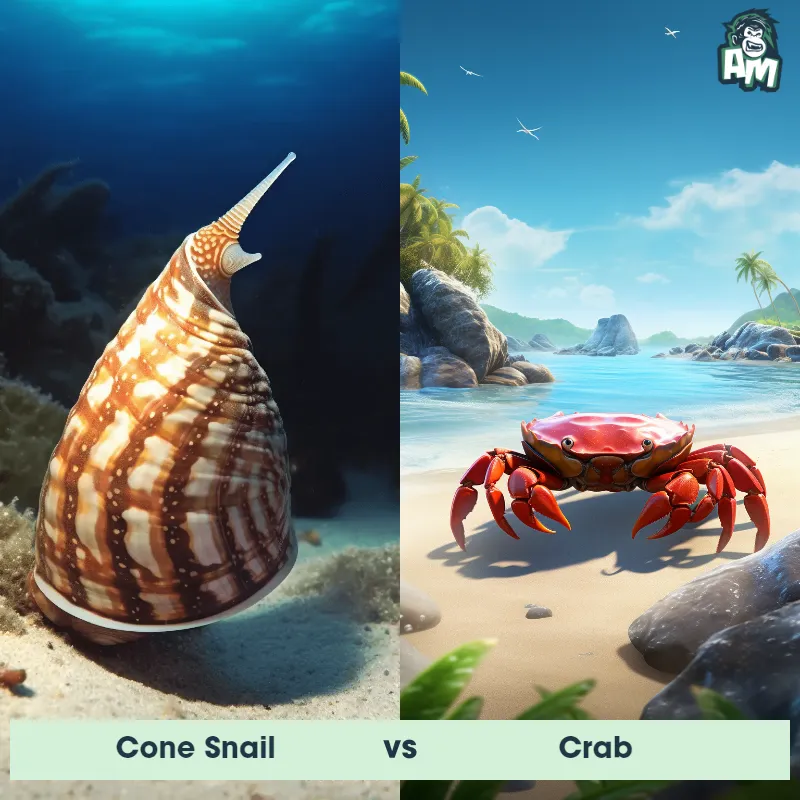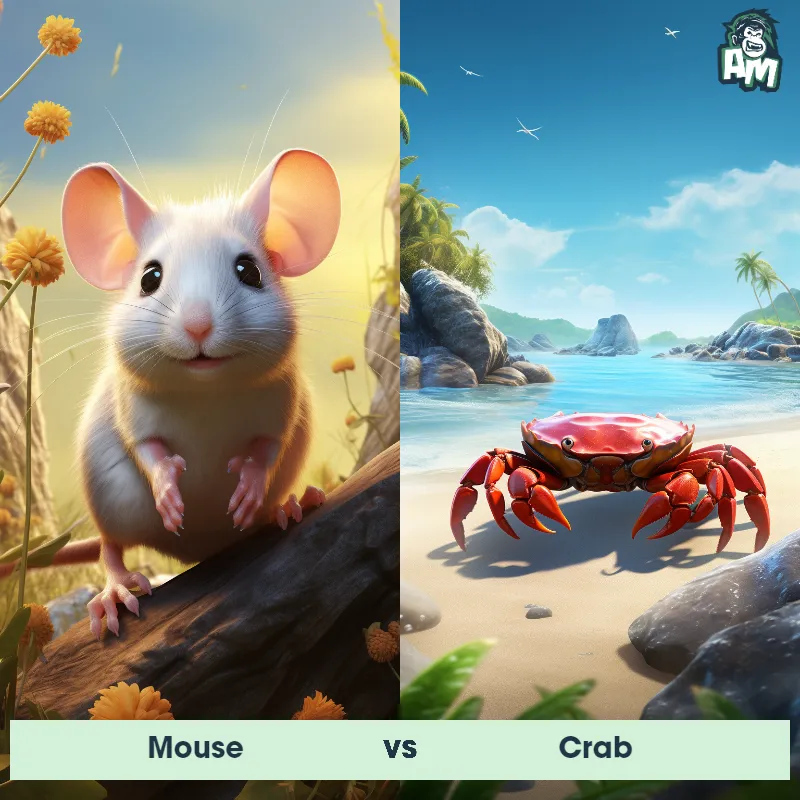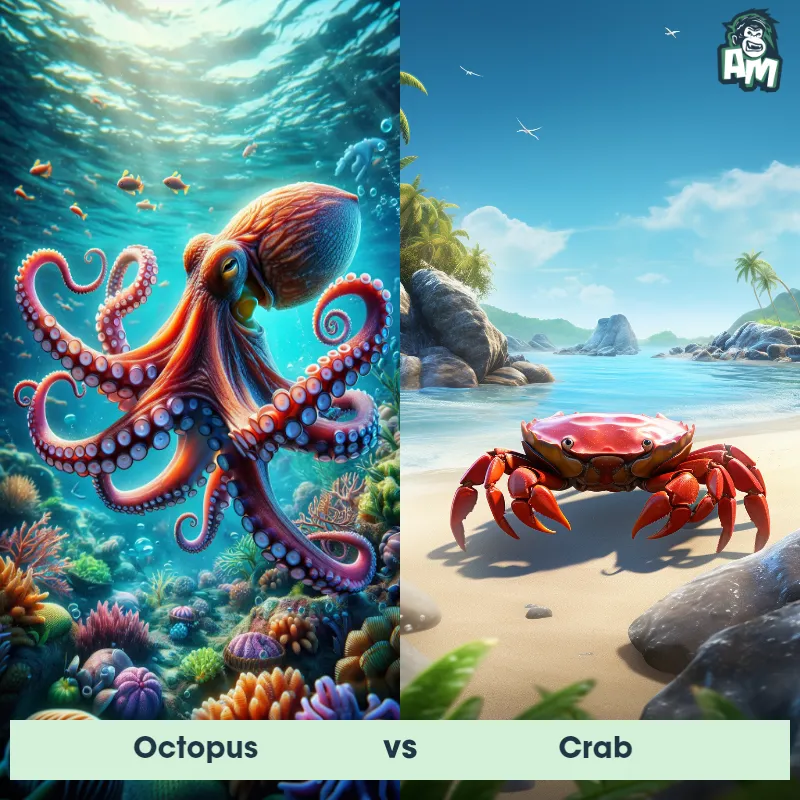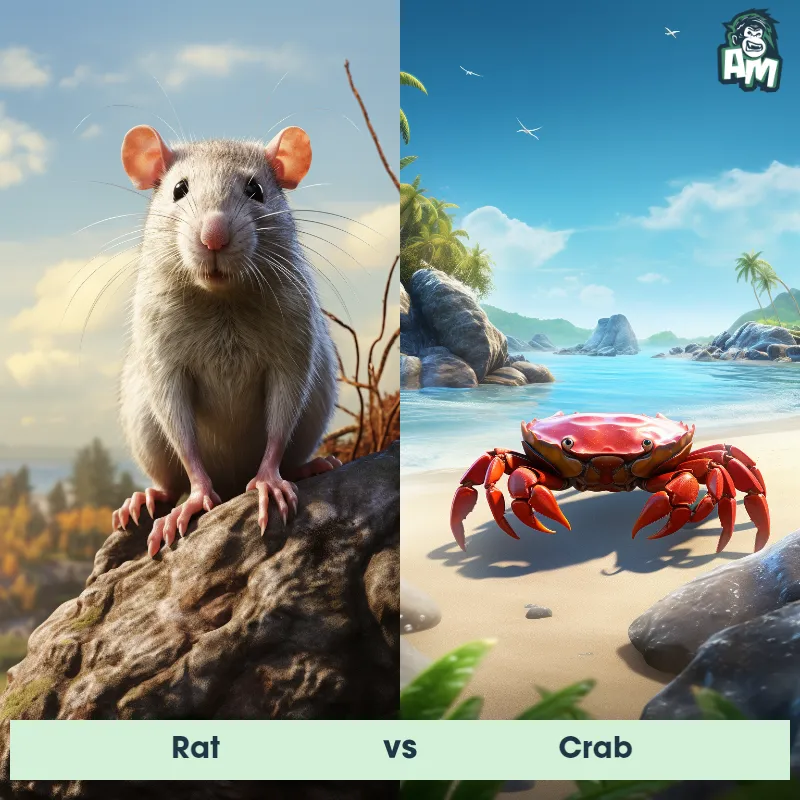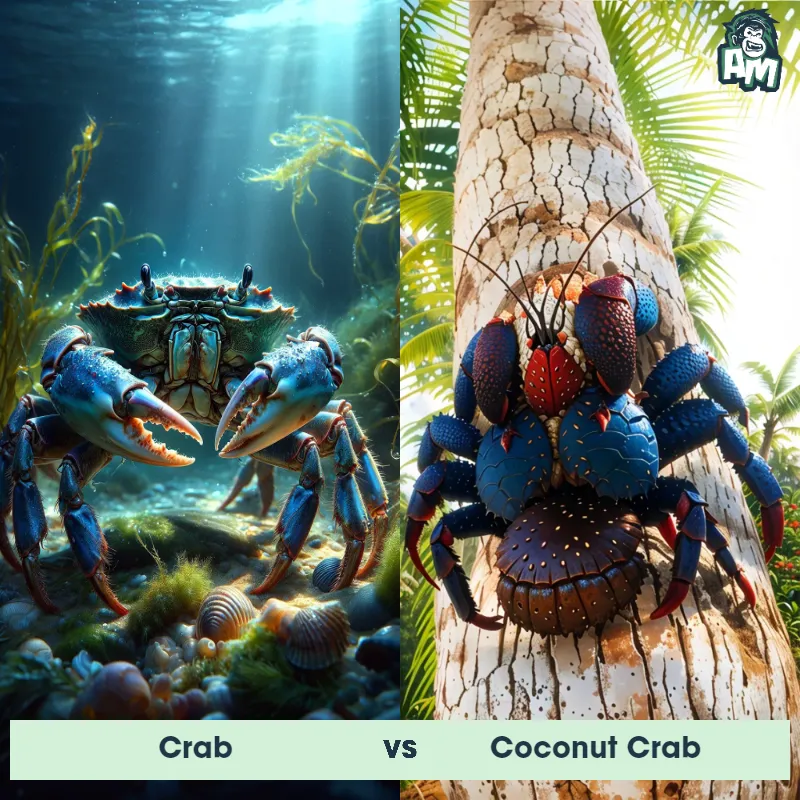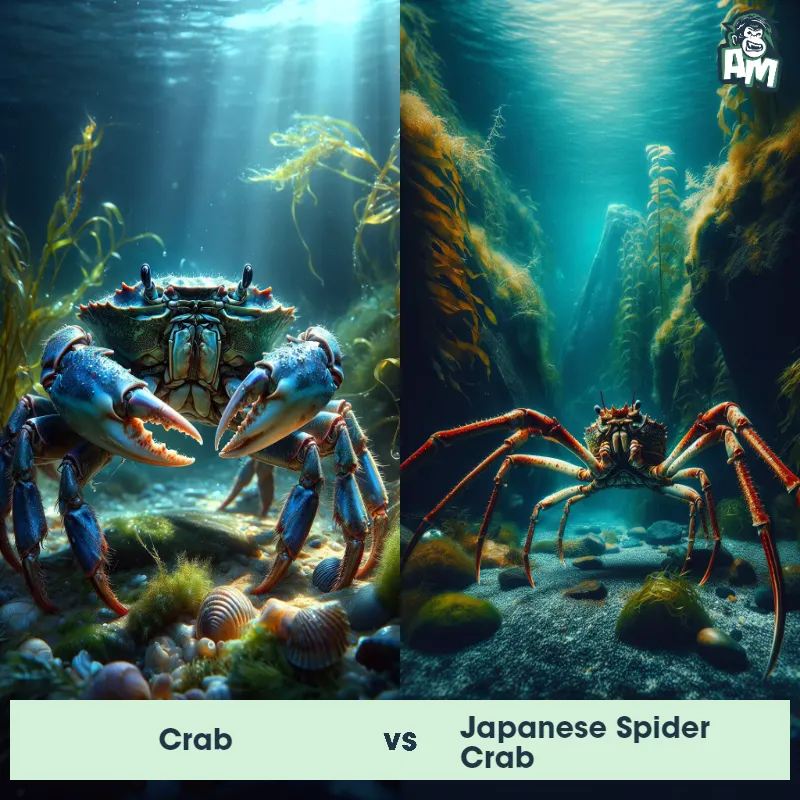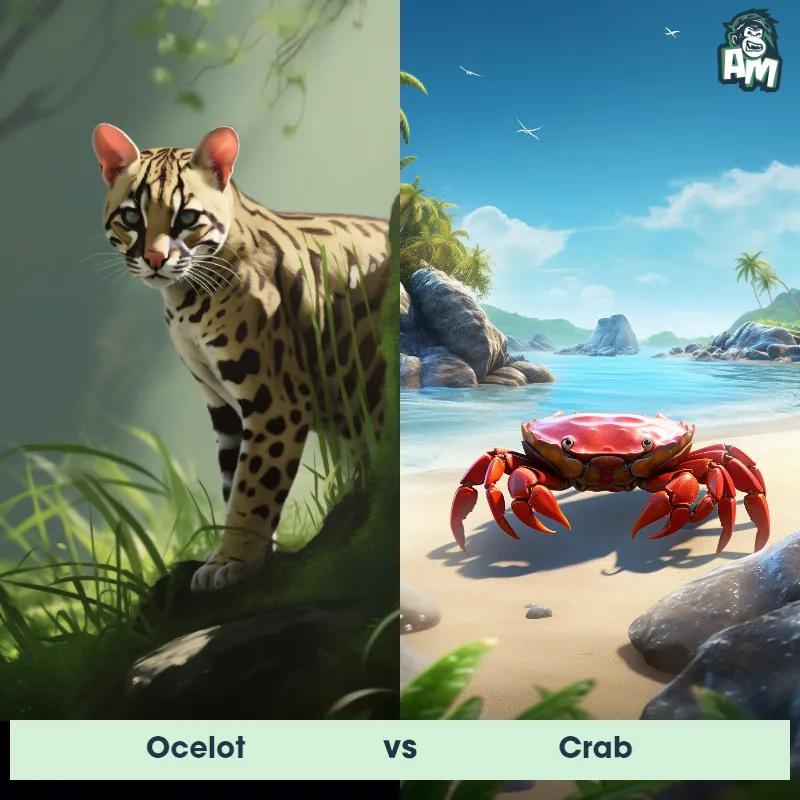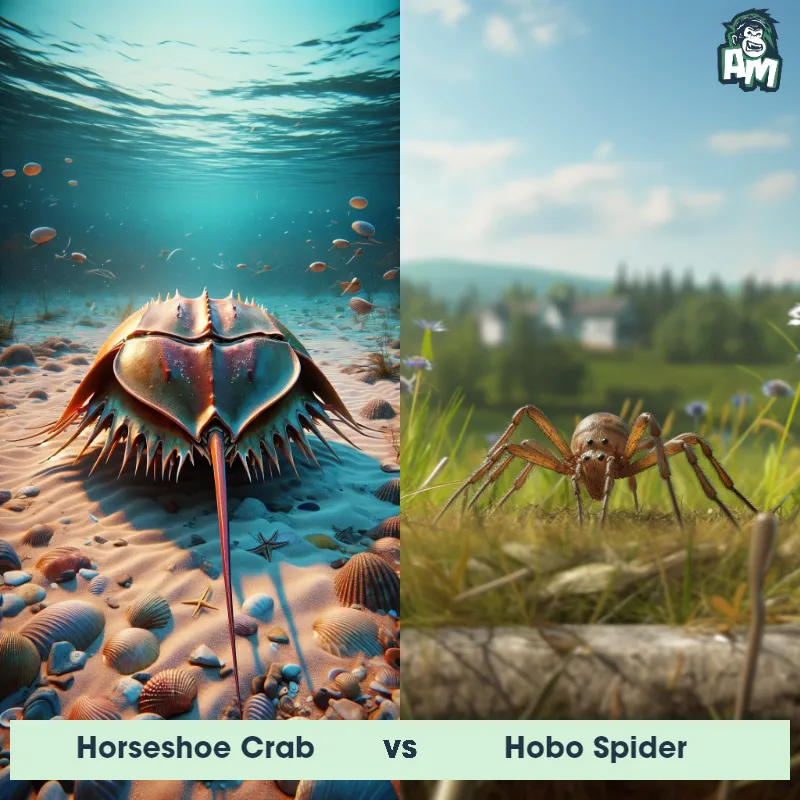Horseshoe Crab vs CrabSee Who Wins

Welcome to today's exciting matchup between the Horseshoe Crab and the Crab! These two crustaceans are ready to battle it out in three intense rounds to determine who will come out on top. Round 1:
Contender 1: Horseshoe Crab
The Horseshoe Crab, scientifically known as Limulus polyphemus, is a unique marine creature found in coastal areas of the Atlantic Ocean. Despite its name, it is actually not a crab but belongs to a separate ancient lineage. Recognizable for its hard exoskeleton and horseshoe-shaped carapace, the Horseshoe Crab possesses an arthropod body structure with 10 legs, two large compound eyes, and a long, spiky tail. Its blood contains copper-based blue pigment, giving it a distinct blue color. Horseshoe Crabs mainly feed on mollusks, worms, and small crustaceans, using their long and sharp chelicerae to crush their prey.
Fun Fact: A fascinating fact about Horseshoe Crabs is that they are considered living fossils, with a lineage that can be traced back over 450 million years, making them older than dinosaurs!
Contender 2: Crab
Crabs are decapod crustaceans known for their characteristic thick exoskeleton and a pair of robust claws. They vary in size from the tiny pea crab, a few millimeters wide, to the giant Japanese spider crab, with a leg span of up to 4 meters. Crabs are typically found in the ocean, but some species are also found in freshwater or on land. Notably, crabs are known for their sideways walking, a motion that distinguishes them from other crustaceans.
Fun Fact: Crabs communicate with each other by drumming or waving their pincers, which is not just a sign of aggression, but can also be a part of their mating rituals.
Matchup Stats
| Horseshoe Crab | Crab | |
|---|---|---|
| Size | 14-24 inches (35-61 centimeters) in length | Varies from a few millimeters to 13 feet (4 meters) leg span |
| Weight | 2-4 pounds (0.9-1.8 kilograms) | Varies greatly, up to 44 lbs (20 kg) for the largest species |
| Speed | 1 mph (1.6 km/h) | 11 mph (18 km/h) |
| Key Strength | Exoskeleton provides protection and defense | Robust claws |
| Biggest Weakness | Slow movement and limited mobility | Vulnerable when molting |
Current Votes
Horseshoe Crab vs Crab
See Who Wins
View More Matches
Looking For More?
Similar Matches
Scientific Stats
| Horseshoe Crab | Crab | |
|---|---|---|
| Scientific Name | Limulus polyphemus | Brachyura |
| Family | Limulidae | Decapoda |
| Habitat | Coastal areas of the Atlantic Ocean | Ocean, Freshwater, Land |
| Geography | Found in North America, primarily in the eastern coasts | Worldwide |
| Diet | Mollusks, worms, and small crustaceans | Omnivores, eat algae, mollusks, bacteria, fungi, and small fish |
| Lifespan | 17 years - 20 years | 1 year - 100 years |
Key Differences between Horseshoe Crab and Crab
- Size: The Horseshoe Crab is typically larger, with the adults reaching up to 24 inches in length, while most Crabs are generally smaller in size.
- Diet: Horseshoe Crabs are detritivores, feeding on decaying organic matter, while Crabs are omnivores, consuming plants, algae, and other small animals.
- Habitat: Horseshoe Crabs primarily live on sandy or muddy ocean bottoms, while most Crabs are commonly found in intertidal zones such as beaches and estuaries.
- Shape: Horseshoe Crabs have a distinctive horseshoe-shaped carapace, while Crabs have a more rounded shell or carapace.
- Coloration: Horseshoe Crabs have a dull brown or greenish color, while most Crabs exhibit a range of colors from red, pink, to blue, and even camouflage patterns.
- Legs: Horseshoe Crabs have long, spiky and jointed legs which are used for moving and swimming, whereas Crabs have shorter, more rounded legs used for crawling.



